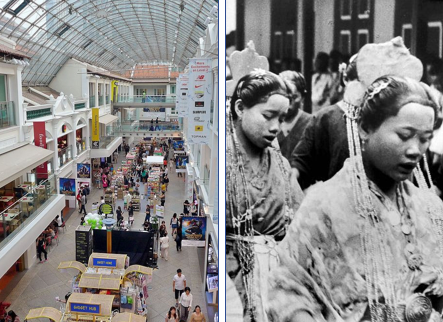The Bugis area, with Bugis Junction, Bugis Street, and Bugis MRT station, are reminders of the Bugis town that once existed nearby long before your time.
Who were the Bugis?
The Bugis (or Buginese) were a skilled seafaring people who came from Southwestern Sulawesi. Because of their trade rivalry with the Dutch, the Bugis were forced to leave their land and travel elsewhere along the Malay Archipelago in search of new trading opportunities.
When the British first set up base here in 1819, Bugis chieftain Arong Bilawa brought along 500 of his people to Singapore to set up their trading business.
Business was very good. By the 1830s, the Bugis in Singapore virtually controlled all trade with the eastern islands of the Malay Archipelago. They were so skilled and successful in maritime trading that the Bugis were called the 'carriers of the East'.
The Bugis settlement originally stretched from Kampong Gelam (present day Kampong Glam) to the Rochor River. It became known as Bugis Town or Bugis Village. However, by 1824, the Bugis were relocated to Kampong Rochor (presently the vicinity around the ICA building near Lavendar MRT station).
Other than Bugis Town, other groups of Bugis also lived in Kampong Bugis along the Kallang and Rochor Rivers.
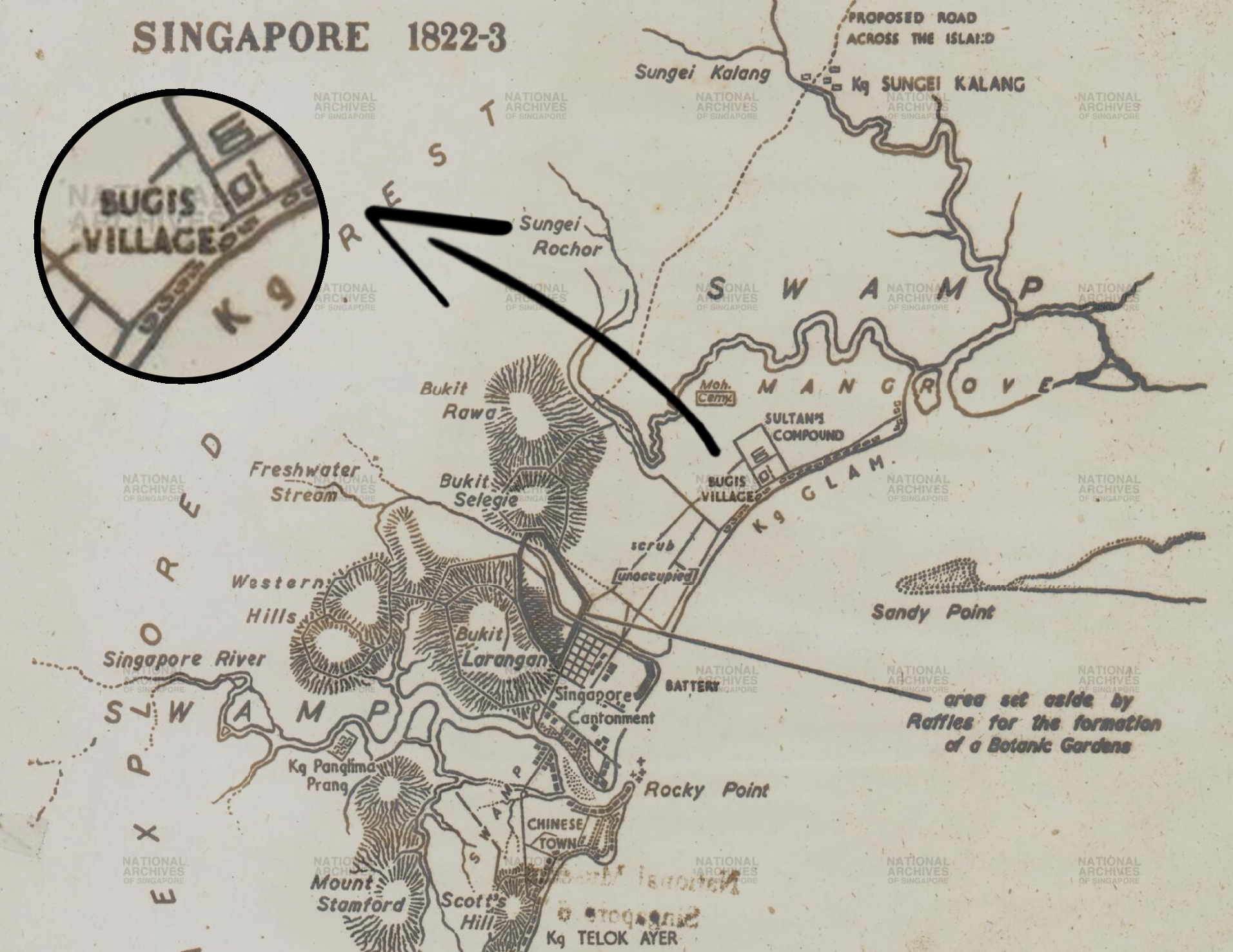 1822 map of Singapore Town. Adapted from National Archives.
1822 map of Singapore Town. Adapted from National Archives.
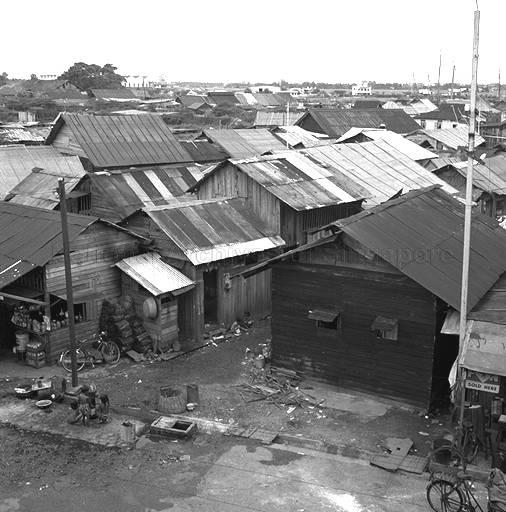 Image of houses in Kampong Bugis taken in 1954. Image from National Archives.
Image of houses in Kampong Bugis taken in 1954. Image from National Archives.
Famed warriors on land and sea
Every October, the Bugis would load up their vessels with native goods from Sulawesi - nutmeg, camphor, cotton goods, and tortoise shell. Their goods were traded in Singapore for European products such as opium, iron, and tobacco, which they would bring back to Sulawesi in December. Their voyages depended on the monsoon winds.
Interestingly, one of the commodities that the Bugis traded in was trepang, also known as sea cucumber, which had a huge demand in China. Bugis traders would sail around Southeast Asia as well as Australia in search of trepang , which they would then trade at international ports.
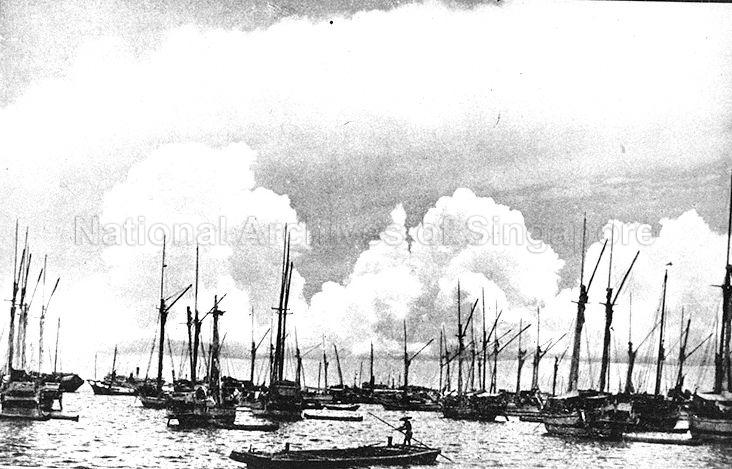 Bugis vessels along the Singapore waterfront. Image from National Archives.
Bugis vessels along the Singapore waterfront. Image from National Archives.
Unfortunately, the Bugis could not maintain their trading monopoly.
The arrival of more technologically advanced Western ships, and competition from the Dutch, saw the Bugis losing out on trade, as their traditional prahus (small boats) struggled to keep up with their trade competitors. As a result, their dominant role in regional maritime trade slowly diminished over time.
Apart from maritime trading, the Bugis were also known to be fierce mercenaries and active participants in the political dramas of the Malay world.
When the 15th Sultan of Johor, Mahmud Shah the Third, passed away without a successor, the Bugis seized the throne for his younger son Tunku Abdul Rahman while his older brother, Hussein Shah, was away in Pahang.
Hussein Shah would later grant the British permission to set up a port in Singapore, after the British had recognised him as the Sultan of Singapore and Johor.
Lost with time
Sadly, the word "Bugis" in the present day is more associated with air-conditioned streets and cheap fashion, rather than the proud community of seafaring people who had played a part in our history.
The Bugis Village of today is also a far cry from what the actual Bugis Village was in the past. Similarly, Bugis Junction and Bugis Street have nothing that harkens back to their namesake.
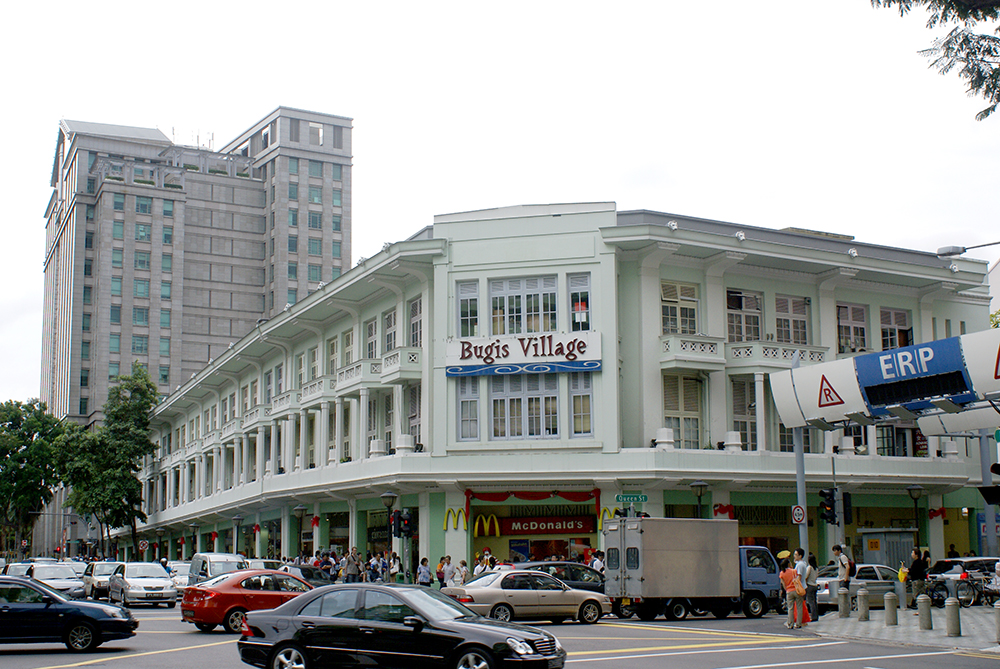 Not a real Bugis village. Image from Wikipedia.
Not a real Bugis village. Image from Wikipedia.
 Malay Street in 1989 before it was transformed into an 'indoor street' together with Malabar Street and Hylam Street to form Bugis Junction shopping centre.
Malay Street in 1989 before it was transformed into an 'indoor street' together with Malabar Street and Hylam Street to form Bugis Junction shopping centre.
But well, at least somewhere hidden in Bugis Junction is a little stylised icon of a prahu that serves as a small reminder of the Bugis heritage.
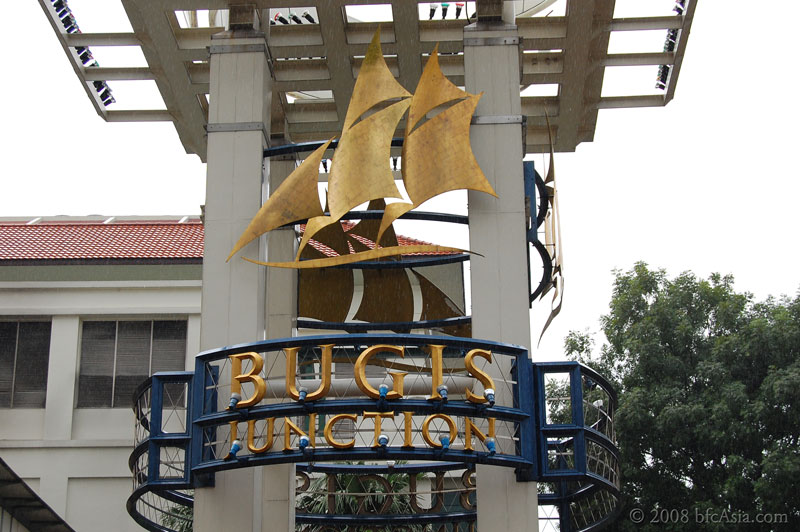 Look! It's a boat! Source.
Look! It's a boat! Source.
If you like what you read, follow us on Facebook and Twitter to get the latest updates.
If you like what you read, follow us on Facebook, Instagram, Twitter and Telegram to get the latest updates.
